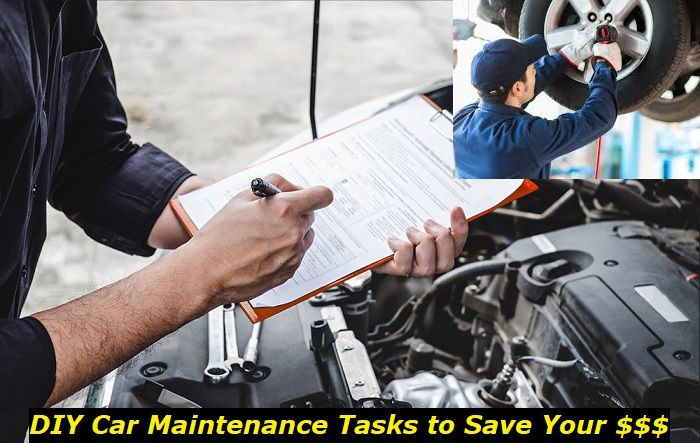The Shovelhead engine has been the subject of mixed reviews since Harley Davidson first introduced it in 1966 to succeed their Panhead engine. Although the Shovelhead was last manufactured in 1984 (when the Evo/Blockhead engine replaced it), more than fifty years down the line, it remains highly sought after amongst seasoned riders who love to modify their bikes.
.jpg)
How to Increase the Longevity of your Shovelhead
Your maintenance habits dictate your Shovelhead's reliability and durability. Even though the various Shovelhead engines have unique weaknesses, they age admirably when treated right. Riders who end up on the side of the road find that, more often than not, it is due to their neglect or carelessness rather than a manufacturing defect.
The Shovelhead is unsuitable for slackers who do not inspect their bikes until something goes wrong or newbies who are not mechanically inclined. It is also not ideal for penny pinchers who are unwilling to replace low-quality stock components with better-functioning ones from the secondary market.
Your Shovelhead is Very Easy to Fix
Before listing the most common problems; it is prudent to mention that your Shovelhead is very easy to fix. This is the primary reason for its pride of place amongst hardcore bikers, who can't help but adore a bike that can be fixed on the side of the road using a simple toolbox.
You will need to keep an eye on your bolts which are likely to loosen due to the Shovelhead's loose tolerance. Similarly, your valves, drive train, and ignition will need periodic adjustment and replacement of contacts.
Regular inspections and maintenance are crucial to ensuring that it is functioning optimally. Unlike the new motorbikes with complex features like electronic ignition that often call for a professional repair technician, with your Shovelhead, you do not need to wait for a tow truck to save the day.
Proud Shovelhead owners rarely hesitate to shut down haters who claim it is high maintenance with the classic line, "Do not buy an old Harley unless you enjoy working on old Harleys". Whether you are considering buying a Shovelhead or are simply looking to perform some maintenance on yours, this article will prove useful.
Read on to learn more about the various problems that are likely to happen to your Shovelhead engine and the appropriate solutions.
Your Shovelhead Suffers Frequent Oil Leaks
Shovelhead owners have been complaining of oil leaks for so long that the pesky problem came to be known as the Shovelhead Drip. The unfair joke that Harley's marked the spot with an oil leak was due to this unfortunate feature of the Shovelhead.
Owners whose models were equipped with automatic primary and chain oilers are more likely to face this issue. Most riders have opted to plug their chain and primary oilers to avoid the problem since it can be done without affecting performance, reliability, or durability.
If your Shovelhead is leaking oil, the lead suspects include
- Worn out head gaskets
- Defective valve cover on the upper side of the engine.
- Defective fuel pump
Solution
Where you spot an oil leak, your first step should be to perform a leak-down test on your Shovelhead. This is the quickest way to identify any valve or ring issues. If your valve covers and rings are properly positioned and not worn down, the problem will likely be in your oil and breather lines.
Your next step should be inspecting your oil and breather lines for damage or blockage. If your Shovelhead is from the 1980s, chances are high that your bike's oil return line is the external type that is notorious for causing leaks. This issue is best fixed by a trained repair technician with plenty of experience repairing Shovelheads.
When replacing parts, you should purchase high-quality compatible parts that will hold up for the longest time possible. For example, replace the stock paper gaskets with quality metal wafer alternatives that ensure your Shovelhead does not suffer blown base gaskets and rocker box after a few years.
Your Shovelhead Bolts Keep Loosening
As mentioned above, your Shovelhead's motor produces intense vibrations that loosen the bolts over time. While retightening your bolts will prevent them from falling out on the road, it is a temporary fix that does not improve your Shovelhead's performance. Riders are advised to ensure their loose bolts are properly torqued.
Your Shovelhead suffers intense vibrations for various reasons:
- Defective flywheels that are hit repeatedly due to being out of balance and out of round.
- Faulty timing caused by a worn mechanical advance,
- Faulty ignition, points, and condenser
- Worn down countershaft sprocket
- Loose chains
- Defective carburetor
- Improper installation of exhaust pipes
Solution
If your bolt is worn out, it is best to purchase a new one to secure your components efficiently. When installing new bolts or retorquing old ones, you will need to refer to your user manual for the right torque specification for your model of Shovelhead.
You can download or purchase one online if you do not have a copy of the user manual. Applying lubricating oil on your bolts when installing or retorquing them is advisable to avoid wearing them out due to excessive friction.
It is advisable to fix the cause of the vibration rather than committing to retightening your bolts every 200 or 500 miles. Most Shovelhead owners have stopped the vibrations by throwing some money at the problem.
You can replace your ignition system with a single fire unit, change your flywheels to a top-rated compatible after-market alternative, install a chain takeup unit, replace rear sprockets and install a CV carburetor that runs much smoother than the stock Keihin model.
If exhaust pipes cause excessive vibration, you can adjust your lower rear mount to find a setting that keeps them rock solid. Shovelhead owners are also advised to install mufflers because they reduce the vibration of straight pipes by up to five times.
Your Shovelhead is Having Starter Problems
Other than leaking oil; Shovelheads are infamous for having various starter challenges. While most of your starting problems are likely due to the solenoid, you may also be a victim of substandard parts or connection errors.
For your Shovelhead to start correctly, the starter relay wire must be connected to the S part of the solenoid. Where the relay wire is connected, but you still have trouble starting, the relay may be wired incorrectly.
Solution
Riders facing starting problems only need their service manual and voltmeter to get to the root of the problem. Begin by ensuring that your terminal contacts were not overtwisted or tightened during the installation.
Next, ensure your battery is not flat/dead by ensuring the voltmeter does not read below 12V. You should also check your spark plug, intake, exhaust, and fuel tank vent for signs of malfunction.
If you cannot identify the cause of the starting problem, it is wise to consult a certified repair technician for expert diagnosis and repair.
Your Shovelhead has Overheating Problems
In the '70s Shovelhead is infamous for being plagued by overheating. The overheating resulted in damaged head bolts and blown gaskets. The engine enjoyed updates from 1977 that aimed to prevent the pistons from expanding due to heat by casting them with steel struts.
Overheating remained a problem constant problem with guides and valves.
Solution
If your Shovelhead is overheating, you will have to check all the usual culprits:
- A defective carburetor causes an incorrect mixture of fuel and air to enter your engine cylinder. This lean or rich mixture causes your Shovelhead to fail to overcome heating, especially in traffic or at high speeds. Replacing your stock carburetor is a worthy investment because it will fix several other issues, e.g., excessive vibration
- Carburetor setting: The mixture of air and fuel entering the engine cylinder must be correct to overcome overheating of the motorcycle. If the air/fuel mixture entering the engine is lean, then there are chances of your engine overheating. So setting the carb to give a perfect mixture is essential. Check the jets to ensure they are not partially stopped.
- Insufficient engine oil - ensure your engine oil is not running low due to a leak or poor maintenance schedule.
- Late ignition timing
- A faulty mechanical advance unit
Some causes of overheating, like late ignition timing and a faulty mechanical unit, are best fixed by a qualified repair technician.
Conclusion
The Shovelhead engine's high torque, simple transmission, and smooth powerband ensure that it remains a cult classic among motorbike enthusiasts. Suppose you are a mechanically inclined rider with some cash to spare on upgrades. In that case, a Shovelhead is the perfect Hardy model to restore to former glory or modify to untold limits.
Riders who already own Shovelheads must surrender to the constant maintenance required or sell their bike to a more hands-on owner. If you want to learn more about maintaining your Shovelhead, do not give up because it is simpler than you think. A wealth of resources and devoted Harley fans are ready to help you fix your Shovelhead.
About the authors
The CarAraC research team is composed of seasoned auto mechanics and automotive industry professionals, including individuals with advanced degrees and certifications in their field. Our team members boast prestigious credentials, reflecting their extensive knowledge and skills. These qualifications include: IMI: Institute of the Motor Industry, ASE-Certified Master Automobile Technicians; Coventry University, Graduate of MA in Automotive Journalism; Politecnico di Torino, Italy, MS Automotive Engineering; Ss. Cyril and Methodius University in Skopje, Mechanical University in Skopje; TOC Automotive College; DHA Suffa University, Department of Mechanical Engineering






Add comment